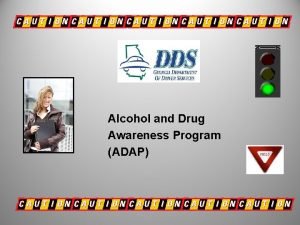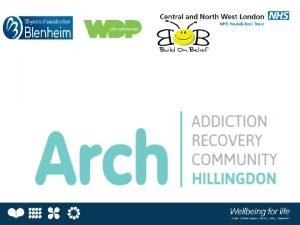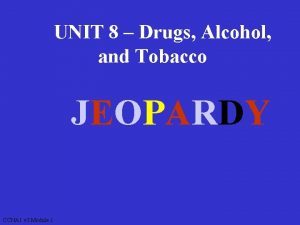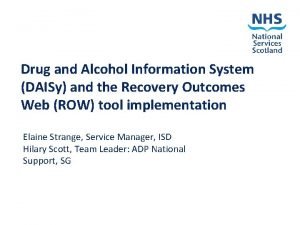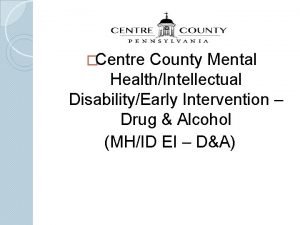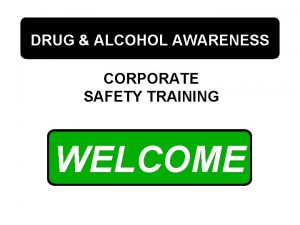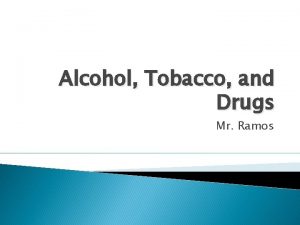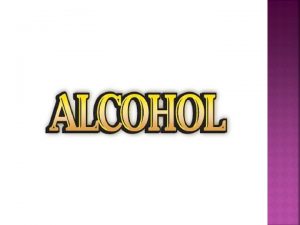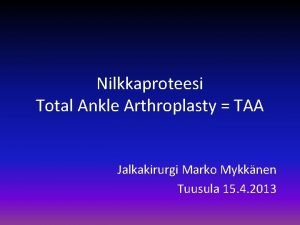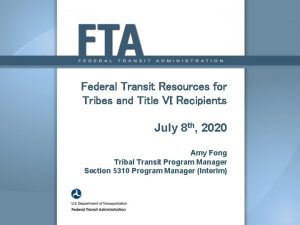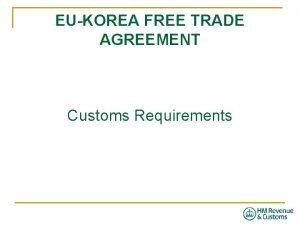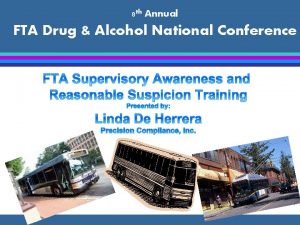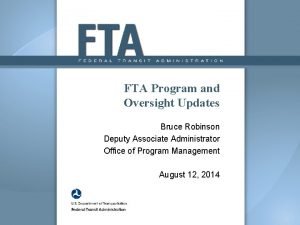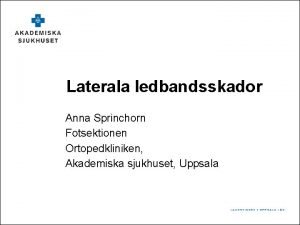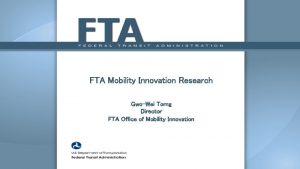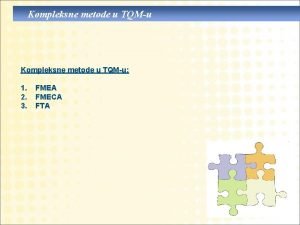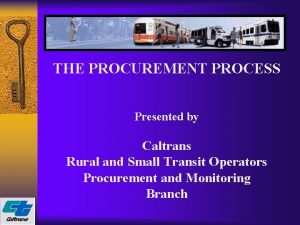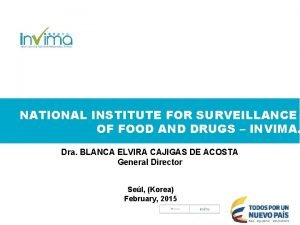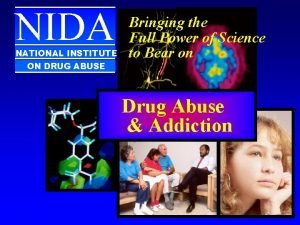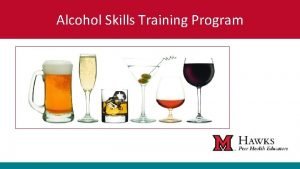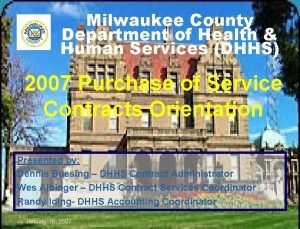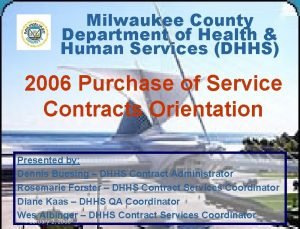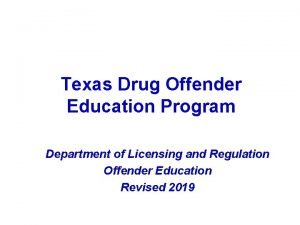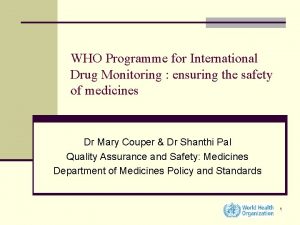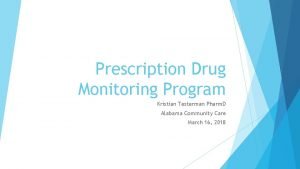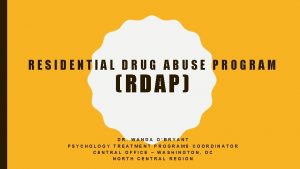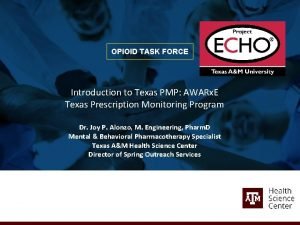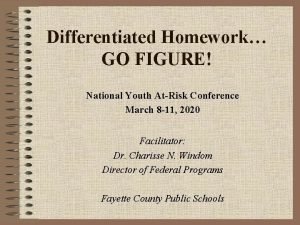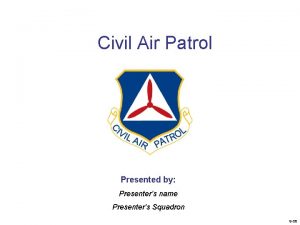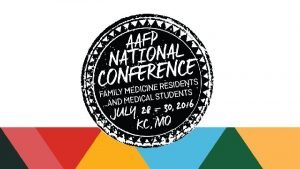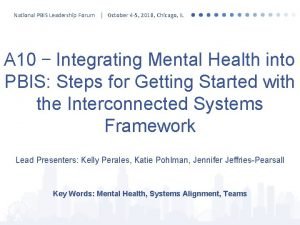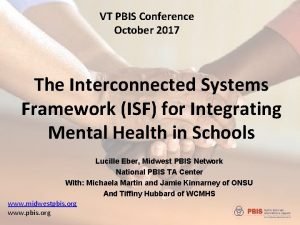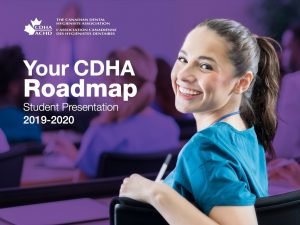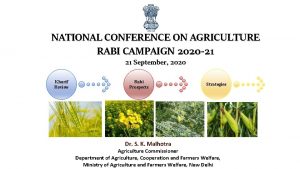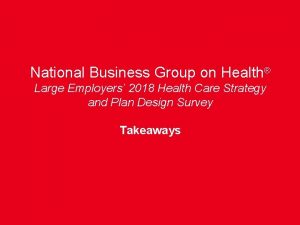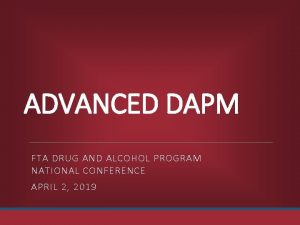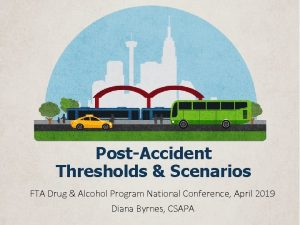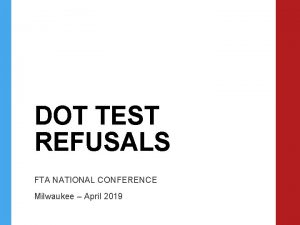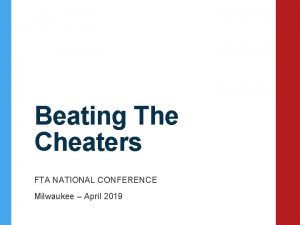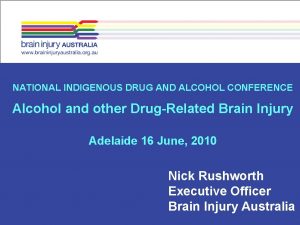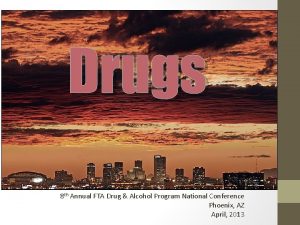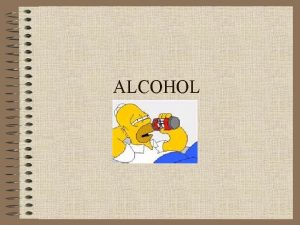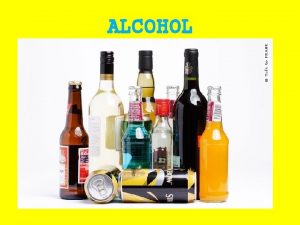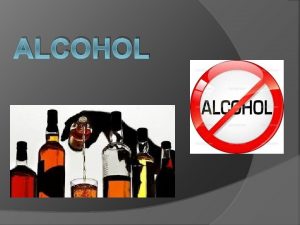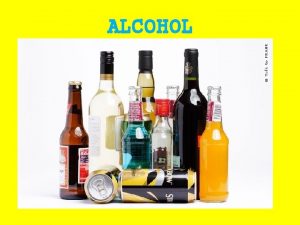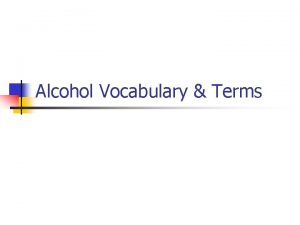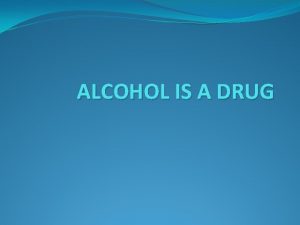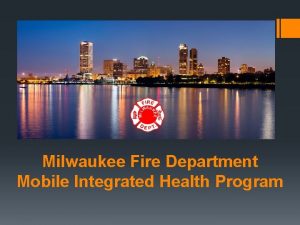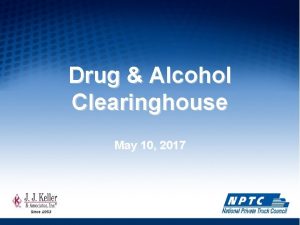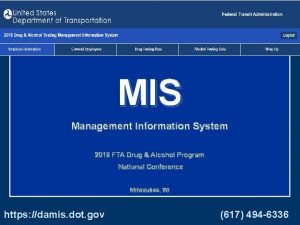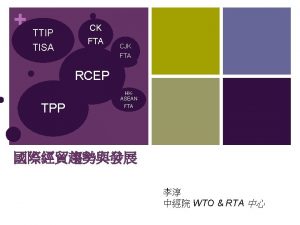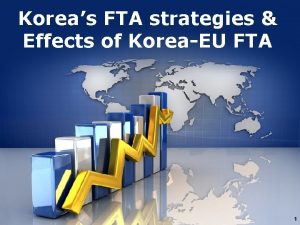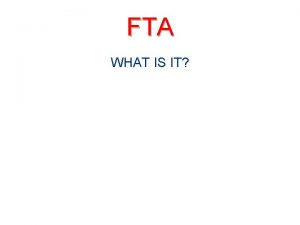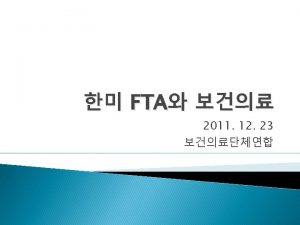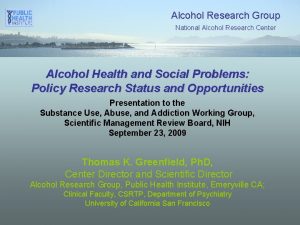FTA Drug and Alcohol Program National Conference Milwaukee









































- Slides: 41

FTA Drug and Alcohol Program National Conference Milwaukee, 2019 Iyon Rosario and Juan Moya

Guiding Regulations FTA FMCSA 49 CFR Part 655 49 CFR Part 382 Part 40 2

Who is Covered? FTA FMCSA Recipients of FTA funding: 5307, 5309, 5311, 5339 Any person and all employers of such persons who operate a CMV in commerce in any State Regulation covers the employer only Regulation covers employer & SS employee • Employer requires compliance from SS employee • Owner-operators comply with employer & employee provisions 3

Coverage - Exemptions FTA FMCSA Maintenance contractors for employers in areas of less than 200, 000 Persons required to comply with Part 655, per 382. 103(d)(1) Taxi operators if transit patrons may choose from 2+ providers Persons waived from CDL requirements by the licensing State: Volunteers if no CDL required or remuneration above expenses • Military personnel (mandatory) • Operators of a farm vehicle (permissive) • Firefighters and ambulance drivers (permissive) 4

Safety-Sensitive Functions FTA FMCSA Operating a revenue service vehicle CDL drivers operating CMVs on public roads Maintaining a revenue service vehicle or equipment used in revenue service Mechanics – if they may be required to drive a CMV at any time Controlling dispatch or movement of a revenue service vehicle Dispatchers – if they may be required to drive a CMV at any time Operating a non-revenue service vehicle (when required to have a CDL) Carrying a firearm for security purposes 5

Examples of Dual-Mode Employers A county government with transit as well as snowplows or other municipal trucks requiring a CDL A company with a transit contract and school bus contract where one pool of employees operates school buses and a separate pool of employees operates transit vehicles A company with a transit contract and a school bus contract where employees might operate either vehicle 6

Dual-Mode Employers Dual-mode employer does not always mean dual-mode employee Employees who only do work covered by one mode are only subject to the testing rules of that mode 7

Pre-Employment Testing FTA Negative drug test required before first SS function • An employee working for 2 FTA -covered employers must take 2 PE tests (and be in both random testing pools) PE test if employee has not performed a SS function AND is out of random pool for 90+ consecutive days FMCSA Employers may use employee without a pre-employment test if the employee has been in a random testing program for a year and has not had a drug/alcohol violation PE test if employee is out of random pool for more than 30 days 8

Key Questions – Pre-Employment Do I need two pre-employment tests (i. e. , one for FTA and one for FMCSA)? No, only one test is required. What is checked on the CCF: FTA or FMCSA? Choose the mode that will regulate >50% of the employee’s functions. What if I don’t know which mode that will be? Ask a supervisor to describe their job functions and make an educated decision. 9

Key Questions – Pre-Employment Do I just follow the 30 -day rule because it is stricter? Follow the out-of-pool requirements for the mode regulating >50% of the employee’s functions. 10

Previous Employer Testing History FMCSA FTA Review DOT testing history from prior employers an applicant worked for in last two years. • • Alcohol test results 0. 04 or greater Verified positive drugs tests Refusals to test Other violations of DOT agency drug/alcohol regulations • Documentation of successful completion of DOT return-to-duty process (if applicable) For employees conducting intrastate operations, review DOT testing history from prior employers an applicant worked for in last two years. For interstate, review three years. Alcohol test results 0. 04 or greater Verified positive drugs tests Refusals to test Other violations of DOT agency drug/alcohol regulations • Documentation of successful completion of DOT return-to-duty process (if applicable) • • 11

Key Questions – Testing History Do I need to fill out two forms? No, only one form is required. So do I go back two years or three years? Follow the requirements for the mode that will regulate >50% of the employee’s functions. Note: It is not a violation to request testing information going back longer than the required period. 12

Exemptions from FMCSA § 391 Medical Qualifications § 391 applies to interstate operations States establish medical qualifications for intrastate drivers This covers most transit drivers Know your state’s adoption of § 391 Medical Qualifications 13

Random Testing FMCSA FTA Random Testing Rate: 50% drugs, 10% alcohol Random Testing Rate: 25% drugs, 10% alcohol Selection via scientifically valid method Same Unannounced and unpredictable Same Reasonable spread throughout the calendar year Same All times of the day when SS functions are performed 14

Availability for Random Testing FMCSA FTA Drug testing: anytime employee is on duty Same; May notify driver in offduty status of drug test Alcohol testing: just before, during, or just after performance Same Proceed immediately to testing site upon notification Same May negotiate end-of shift arrangements for employees Testing time counts against Hours of Service 15

Key Questions – Random Testing Can I combine my safety-sensitive employees into one pool? Yes, all DOT employees can be in the same pool. Do I have to combine them? No, you can have separate pools for each DOT mode. What is checked on the CCF: FTA or FMCSA? Choose the mode that regulates >50% of the employee’s functions. 16

Post-Accident Testing Thresholds FMCSA FTA Fatality: TESTS REQUIRED Non-Fatal: • Medical attention away from scene • Vehicle with disabling damage TESTS REQUIRED UNLESS: • Employee’s performance can be completely discounted as a contributing factor Same Non-Fatal: • Medical attention away from scene • Vehicle with disabling damage TESTS REQUIRED IF: • Operator receives a citation for a moving traffic violation 17

18

19

Post-Accident Time Requirements FMCSA FTA As soon as practicable after SS employee dismissed from scene and medical attention provided Same Testing occurs once employer makes decision Testing occurs once citation is issued • Alcohol: 2 hr / 8 hr rule • Drugs: 32 hr rule 20

Key Questions – Post-Accident Testing Do I send the employee for an FTA post-accident test or an FMCSA post-accident test? Choose the mode that regulates the employee’s functions at the time of the accident. Best Practice: Have a decision-making form that clearly walks supervisors through decision process and helps them understand when to FTA test, when to FMCSA test, and when no testing is required. 21

Reasonable Suspicion FMCSA FTA Specific, contemporaneous, articulable observations concerning appearance, behavior, speech, or body odors of employee Same Observations may also include indications of chronic effects and withdrawal effects for drugs (but not alcohol) 22

Reasonable Suspicion FMCSA FTA Alcohol tests just before, during, or just after performance of SS function Same Trained supervisor or company official must make observations Same No specified timeline for written reports (best practice is to be prompt) Written report within 24 hours of observed behavior, or before test results are released if earlier than 24 hours 23

Key Questions – Reasonable Suspicion Are the training requirements for supervisors the same? Yes. Note: The training does not need to be FTA- or FMCSAspecific. What is checked on the CCF: FTA or FMCSA? Choose the mode that regulates the employee’s functions at the time of the decision to test. 24

Alcohol Prohibitions FMCSA FTA No performing SS function with alcohol concentration 0. 04 or greater Same No alcohol use within 4 hours prior to performing SS function Same No use while on-call to perform a SS function 8 hrs off-duty after alcohol result 0. 02 -0. 039, or until <0. 02 24 hrs off-duty after alcohol result 0. 02 -0. 039 25

Key Questions – Alcohol Prohibtions After an alcohol result of 0. 02 -0. 039, do I keep the employee out for 8 hours or 24 hours? It depends on the modal authority of the test: ‒ 0. 02 -0. 039 on an FTA test → out for at least 8 hours ‒ 0. 02 -0. 039 on an FMCSA test → out for at least 24 hours 26

Consequences for Violations FMCSA FTA Immediate removal from safety -sensitive function Same Referral to qualified Substance Abuse Professional Same Return-to-duty and Follow-up (if applicable): Performed in accordance with Part 40, Subpart O Same 27

Key Questions – Violations Are the return-to-duty requirements identical? Yes, both follow the requirements in Part 40, Subpart O. 28

Rx and OTC Medications FMCSA FTA No regulatory requirements, Rx/OTC policy recommended Drivers cannot operate unless advised by licensed physician that the Rx will not impact ability to safely operate a CMV Employers may require employees to disclose use of any Rx/OTC medications Same 29

Policy Requirements FMCSA FTA Develop policy statement Same Disseminate policy or written notice of availability to all covered employees Disseminate policy to all covered employees Written notice of policy availability to employee organizations Same Signed certificate of receipt recommended, but not required Signed certificate of receipt required Approval/adoption by local governing board or official with designated authority 30

Policy: Required Content FMCSA FTA Identity of contact person designated to answer questions Same Categories of covered employees Same Covered safety-sensitive functions 31

Policy: Required Content FMCSA FTA Testing circumstances Same Testing procedures in accordance with Part 40 Same Requirement to submit for testing • Drugs (anytime on duty) • Alcohol (just before, during, or after SS function) Same 32

Policy: Required Content FMCSA FTA Prohibited behaviors Same Refusal behaviors Same Consequences of a positive drug test, alcohol test result of 0. 04 or greater, or test refusal Same Consequences of an alcohol test result of 0. 02 -0. 039 Same 33

Policy: Required Content FMCSA FTA Any additional employer provisions • Clearly differentiated Same Info about effects, signs, and symptoms of drug and alcohol use, methods of intervention Info required to be reported to the Clearinghouse (on and after January 6, 2020) 34

Key Questions – Policies Do I need two separate policies? No, you can incorporate the required provisions from both modes into one policy Sample policy is available at: http: //transit-safety. fta. dot. gov/Drug. And. Alcohol/Tools/ 35

Employee & Supervisor Training FMCSA FTA Safety-sensitive employees: • 60 min of training on effects and consequences of prohibited drug use Safety-sensitive employees: • Info on effects and consequences of drug use and alcohol use provided in policy Reasonable suspicion for supervisors: • 60 min - indicators of drug use • 60 min - indicators of alcohol misuse Same 36

Records Retention - Training FTA FMCSA Records related to training of supervisors & employees: Records related to training of supervisors, drivers, BATs, STTs: • Retain for at least 2 years after the person has ceased performing these functions For an easy-to-use table of other records retention requirements for all DOT modes, see ODAPC’s Employer Guidelines 37

MIS Reporting FMCSA FTA Annually prepare and maintain a summary of test results Same Submit to FTA by March 15 Submit to FMCSA, only when requested, by March 15 38

Key Questions – MIS Reporting How do I report? Report covered employees to the mode regulating >50% of the employee’s functions. Report testing information to the mode under which the tests were conducted. Do not double report. What if all employees work majority for FMCSA… do I report anything to FTA? Report zero employees to FTA, but indicate any tests conducted under FTA authority. 39

Enforcement & Compliance FTA FMCSA Suspension or ineligibility for FTA funding Fines and penalties on the employer and/or employee Must certify compliance annually No requirement to certify compliance, except “New Entrant” employers • State DOTs certify compliance of sub-recipients 40

Helpful Contact Information What if I have questions? FTA Assistance: - Iyon Rosario (202)366 -2010 or iyon. rosario@dot. gov - FTA Drug and Alcohol Hotline (617)494 -6336 or fta. damis@dot. gov FMCSA Assistance: - Juan Moya (202)366 -4844 or juan. moya@dot. gov - FMCSA Drug and Alcohol (202)366 -2096 or fmcsadrugandalcohol@dot. gov 41
 Tadra is an acronym for georgia’s
Tadra is an acronym for georgia’s Arch drug and alcohol service
Arch drug and alcohol service 12 core functions of substance abuse counseling
12 core functions of substance abuse counseling Drug and alcohol jeopardy
Drug and alcohol jeopardy Daisy drug and alcohol
Daisy drug and alcohol Centre county drug and alcohol
Centre county drug and alcohol What effect might alcohol and other drug
What effect might alcohol and other drug Drug and alcohol safety training
Drug and alcohol safety training High boiling point alcohols
High boiling point alcohols Difference between primary secondary and tertiary alcohols
Difference between primary secondary and tertiary alcohols Tobacco
Tobacco Why is alcohol considered a drug? *
Why is alcohol considered a drug? * Exhausted drug
Exhausted drug Jalkakirurgi
Jalkakirurgi Fta regions
Fta regions Euhorea
Euhorea Fta reasonable suspicion training
Fta reasonable suspicion training Bruce robinson fta
Bruce robinson fta Anna sprinchorn
Anna sprinchorn Fta concept
Fta concept Fmea metoda
Fmea metoda Fta circular 4220
Fta circular 4220 Regulatory agencies
Regulatory agencies National institute on drug abuse
National institute on drug abuse Alcohol skills training program
Alcohol skills training program Health and human services milwaukee
Health and human services milwaukee Milwaukee health and human services
Milwaukee health and human services Texas drug offender education program test answers
Texas drug offender education program test answers Who program for international drug monitoring
Who program for international drug monitoring Alabama prescription drug monitoring program
Alabama prescription drug monitoring program 5 rules of rational thinking rdap
5 rules of rational thinking rdap Texas pmp aware
Texas pmp aware National youth at risk conference
National youth at risk conference Civil air patrol national conference
Civil air patrol national conference Aafp poster presentation
Aafp poster presentation Pbis national conference
Pbis national conference National conference on agriculture for summer campaign
National conference on agriculture for summer campaign National pbis conference
National pbis conference Cdha national conference 2019
Cdha national conference 2019 National radiological emergency preparedness conference
National radiological emergency preparedness conference National conference for rabi campaign 2020
National conference for rabi campaign 2020 National business group on health conference 2018
National business group on health conference 2018
